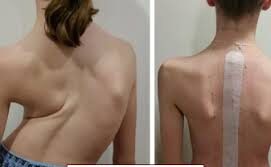Scoliosis Surgery
Treatment > Scoliosis Surgery

Scoliosis Surgery
What is Scoliosis Surgery?
Scoliosis surgery is a treatment for scoliosis, a condition where the spine is tilted, rotated, or curved sideways in an “S” or “C” shape. Scoliosis causes the body to lean to one side, affecting the balance and personality, potentially leading to breathing and neurological problems that impact quality of life. Scoliosis surgery aims to stop further spine curvature, straighten the spine, and create stability for a stronger and more balanced spine.
When is Scoliosis Surgery needed?
When the curvature exceeds 45 degrees or demonstrates a tendency for swift progression, orthopedists will suggest scoliosis surgery. This procedure aims to rectify the spinal curvature and preempt future scoliosis issues. Additionally, the specific surgical approach will be determined mainly by the configuration of the scoliosis.
How is scoliosis surgery performed?
Scoliosis surgery is decided upon by orthopedic surgeons when dealing with individuals having scoliosis characterized by a Cobb angle exceeding 45 degrees or demonstrating rapid progression. The goal is to correct the spinal curvature, enhance spine strength and stability, and forestall future scoliosis issues. The orthopedic surgeon will evaluate scoliosis surgery options based on the following surgical techniques:
Fusion. This spinal surgery permanently fuses two or more adjacent vertebrae so that they grow together at the spinal joint and form a solid bone that no longer moves. Modern surgical approaches and instrumentation—rods, screws, hooks, and/or wires placed in the spine—have enabled spinal fusion surgeries to achieve better curvature correction and faster recovery times than in the past.
An advantage to spinal fusion surgery is that it has a long-term record of safety and efficacy for treating scoliosis. While a drawback to the procedure is that any fused vertebrae will lose mobility, which can limit some of the back’s bending and twisting, today’s spinal fusions tend to fuse fewer vertebrae and maintain more mobility than in the past.
Growing systems (to delay fusion). Rods are anchored to the spine to help correct/maintain the spine’s curvature while the child grows. Every 6 to 12 months, the child has another surgery to lengthen the rods to keep up with the spine’s growth. Once the patient is close enough to skeletal maturity, the patient will usually get a spinal fusion.
Fusionless. Current fusionless surgery methods employ growth modulation on the spine similar to what has been done in the past to treat unequal leg heights in growing children. The theory is that by putting constant pressure on a bone, it will grow slower and denser. By applying such pressure on the outer side of a spinal curve, the surgeon aims to slow or stop the growth of the curve’s outer side while the curve’s inner side continues to grow normally. As the spine continues to grow in this manner, the lateral curvature should reduce as the spine becomes straighter.
One fusionless method uses a vertebral tethering system, which involves placing screws on the outer side of the curve and then pulling them taut with a cord so the spine straightens. Compared to spinal fusion, fusionless surgery has the potential benefit of retaining more spinal mobility. However, this is a newer approach and long-term data about the risks and benefits are not yet available.
How long does post-scoliosis surgery recovery take?
The recovery period following scoliosis surgery typically takes 2-4 weeks. The resumption of regular activities generally occurs within 4-6 months, contingent upon the severity of the scoliosis and the individual’s physical resilience.


